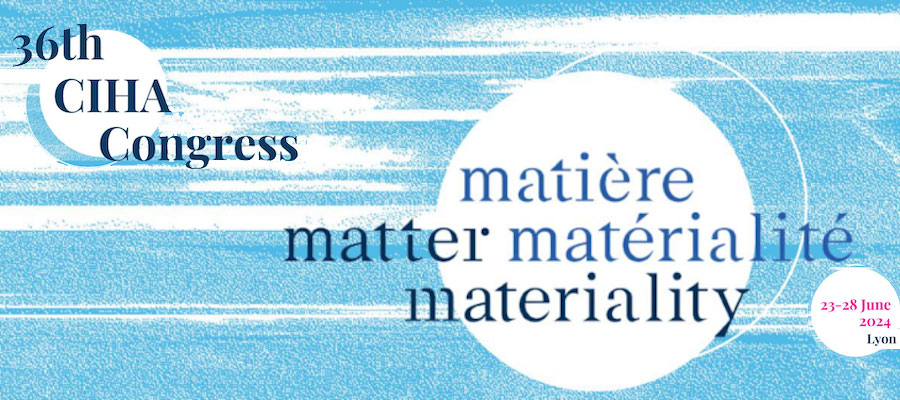Dressing Bodies, Dressing Spaces: Challenges and New Approaches to Textiles and Adornment (300–1600) / Habiller le corps, Habiller l’espace: Enjeux et approches aux textiles et à l'adornement (300–1600) (session CIHA202400009), panel at the 36th Congress of the Comité international d’histoire de l’art (CIHA), Lyon, June 23–28, 2024
Holistic consideration of the interrelationships of pre- and early modern bodies and spaces across Eurasia (300—1600) has been limited by conceptual frameworks divided into geographic, temporal, and methodological specialization. Thus, work on dress has dealt with personal appearance, highlighting questions about identity through clothing, jewelry, and accessories. Likewise, scholarship on interior decoration has considered the relationship of ephemeral design elements to permanent architectural forms through function and placement. Further, scholarship on the body’s presence in space has tended to work with movement, placement, and perception of abstracted bodies, rather than concrete figures weighed down by clothing and jewels.
These approaches, divided largely by medium, reflect art historiographical biases and technical specializations which silo, on the one hand, experts in textiles (weaving), jewelry (metalwork), and sculpture (architecture), or of art historians, archaeologists, and architectural historians, on the other. Similar divisions of body and interior also occur in the broader perspective of material culture theory, while modernist aesthetics have further obscured the interrelatedness of human form and spatial environment. Museum contexts reinforce this divide: objects tend to be isolated within cases, leading to a view of these pieces as context-free, while the museumification of historical spaces means that attendant furnishings are often displayed in special exhibition spaces, whereas historical rooms lie empty.
The proposed panel considers adorned human bodies in their spatial environments to forge new theoretical frameworks drawn from decorative arts historiography, ornament studies, sensory archaeology, anthropology, and material spatiality. An intermedial approach is essential, such as advocated in Luke Lavan and Ellen Swift’s (2009) work on late antique dress and interior decoration and in Jonathan Hay’s (2010) explorations of the somatic experiences of surfaces in early modern Chinese decorative arts objects. Recent efforts to draw together diverse Eurasian experiences of dress and furnishing textiles include a conference on medieval wearables at the Bard Graduate Center (2022) and a panel on embodied movement and interior decoration at the ICMS-Kalamazoo (2023).
We seek papers that:
- articulate new theoretical approaches that treat pre- and early modern dress and furnishings as coherent visual and material systems;
- consider the concept and metaphor of “dress,” viewing bodies as structures for adornment and decor, and buildings as immersive environments that respond to the embellished body;
- evaluate dress and furnishings in a cross-cultural or comparative global framework, particularly in terms of status, value, ritual, identity, and somatic experience;
- include contributions that draw from museum collections, given the history of textile research and collections in Lyon
Submissions should be made through the conference website.
Session organizers
Patricia Blessing, Princeton University
Elizabeth Dospěl Williams, Dumbarton Oaks
Eiren Shea, Grinnell College
